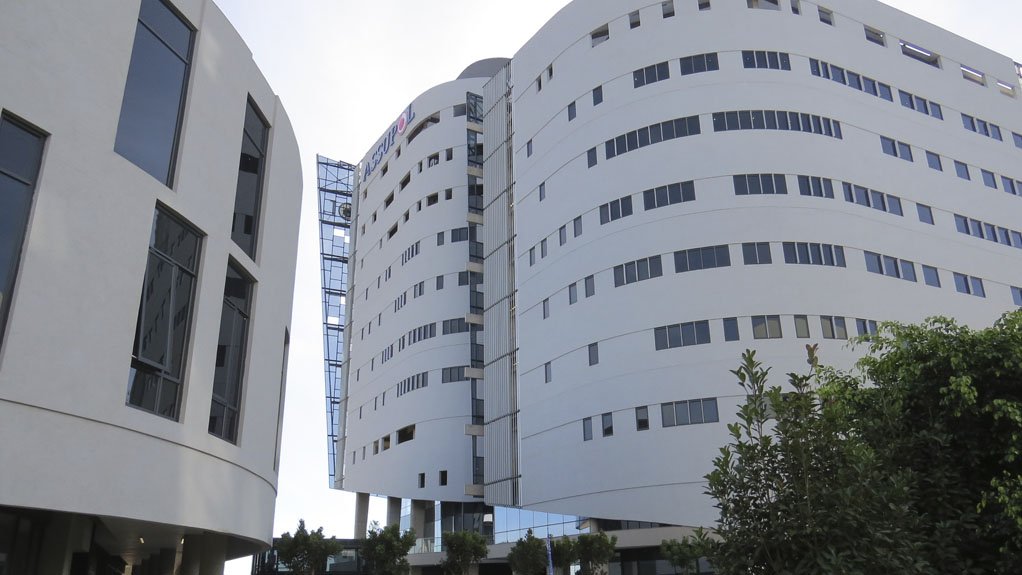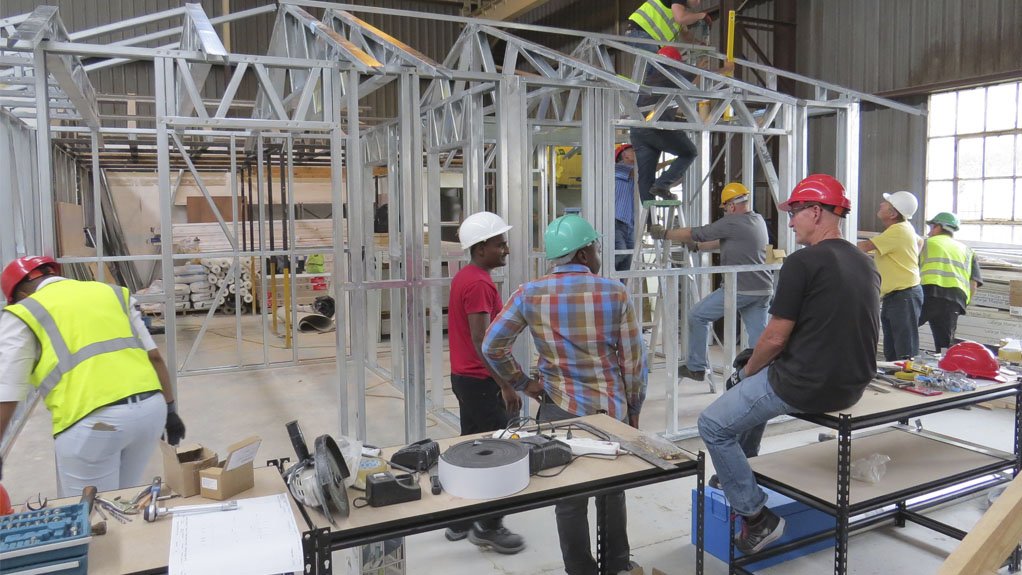The light steel frame building (LSFB) industry is experiencing the same hardship as the building and construction industry. According to Statistics South Africa, the area of buildings completed during 2016, excluding additions and alterations, matched that of 2015, which means that no growth was recorded. Exports of LSFs declined by 40%, largely owing to the establishment of rolling capacity in neighbouring countries, says Southern African Light Steel Frame Building Association (Sasfa) director John Barnard.
Apart from the 19 000 t of thin-gauge high-strength galvanised steel sheet used by the LSF manufacturers, he notes that the LSFB industry did create demand in 2016 for certain other products, including 245 000 m2 of external cladding used for thermal insulation and protection against the elements; 410 000 m2 of bulk insulation, such as glass wool; 560 000 m2 of internal lining, such as gypsum board; and 245 000 m2 of vapour permeable membrane.
Barnard remains optimistic about the future of LSFB in South Africa, enthusing that “it is a concept whose time has come”.
He adds that LSFB has been developed over many years to address problems inherent in masonry construction. LSFBs are more energy efficient and structurally sound, reduce material waste and provide decent employment opportunities for artisans on building sites, as well as for factory personnel.
Globally, telephones, personal computers and motor cars have been developed to eliminate outdated and wasteful practices, says Barnard.
Moreover, he believes that LSFB is part of the emergence of a new building and construction industry.
As with any new industry, there are a few hurdles. The main challenge is the relatively low level of awareness of LSFB among construction professionals, such as architects and engineers, as well as potential clients.
Another challenge is the shortage of skilled and competent builders able to execute LSFB construction. Although there are a growing number of stable and competent LSFB contractors in South Africa, inexperienced and untrained smaller contractors not registered with Sasfa are entering the market, which occasionally results in unsatisfactory projects and “this reflects poorly on the LSFB method”, Barnard explains.
As a means of mitigating the challenge, he notes that Sasfa offers training for building contractors. The training covers the basics of LSFB, after which trainees must gain practical experience on smaller projects before taking on complex building contracts.
Through its Accreditation Scheme, Sasfa is inviting builders to apply for an assessment on one of their current LSFB projects. A team of experts in different aspects of LSFB will do an on-site evaluation to determine whether the contractor is competent.
Barnard explains that, during the site inspection, Sasfa will look at the correct application of the requirements of the LSFB code (SANS 517) – from anchor bolts, accuracy of concrete work, installation of insulation, cladding and lining materials to services, most notably electricity and plumbing and the finishing of the building.
Sustainability in LSFB
Barnard states that LSFB offers a number of advantages to the developer, client, builder and designer. “The first aspect is speed of construction and, provided that proper planning has been done, LSFB offers significant savings during the construction period.”
Barnard uses the example of fast food outlets, which were built in three months using LSFB. Identical units using masonry construction methods would have taken between six and eight months.
The second advantage of LSFB is energy savings. Proper insulation to South African National Standards of LSFB, or SANS 517, of such a building will result in compliance with SANS 10400-XA and SANS 204, the requirements that cover heating and cooling energy cost savings over the lifetime of the building.
According to the Council for Scientific and Industrial Research, a single-storey LSF house requires less than half the electricity required to heat and cool a house using masonry construction methods. This is especially relevant in view of rapidly rising electricity costs, notes Barnard.
LSFB also creates opportunities to reduce the logistics costs of transport and handling, owing to its lightweight walls, which weigh 36 kg/m2, compared with the 450 kg/m2 of masonry walls.
Barnard explains that LSFB, as a pre-engineered building method, reduces waste to less than 2% of steel use, compared with up to 15% when using heavy, brittle building elements such as bricks. In addition, LSFB is a dry building process, which saves water on site.
Barnard concludes that he is optimistic about the future of LSFB in the steel industry, adding that by observing the growth and diversity of LSFB projects in South Africa, from the early modest two-bedroom holiday cottages to multistorey office and commercial buildings, this has become a tangible reality.
Edited by: Zandile Mavuso
Creamer Media Senior Deputy Editor: Features
EMAIL THIS ARTICLE SAVE THIS ARTICLE
ARTICLE ENQUIRY
To subscribe email subscriptions@creamermedia.co.za or click here
To advertise email advertising@creamermedia.co.za or click here















